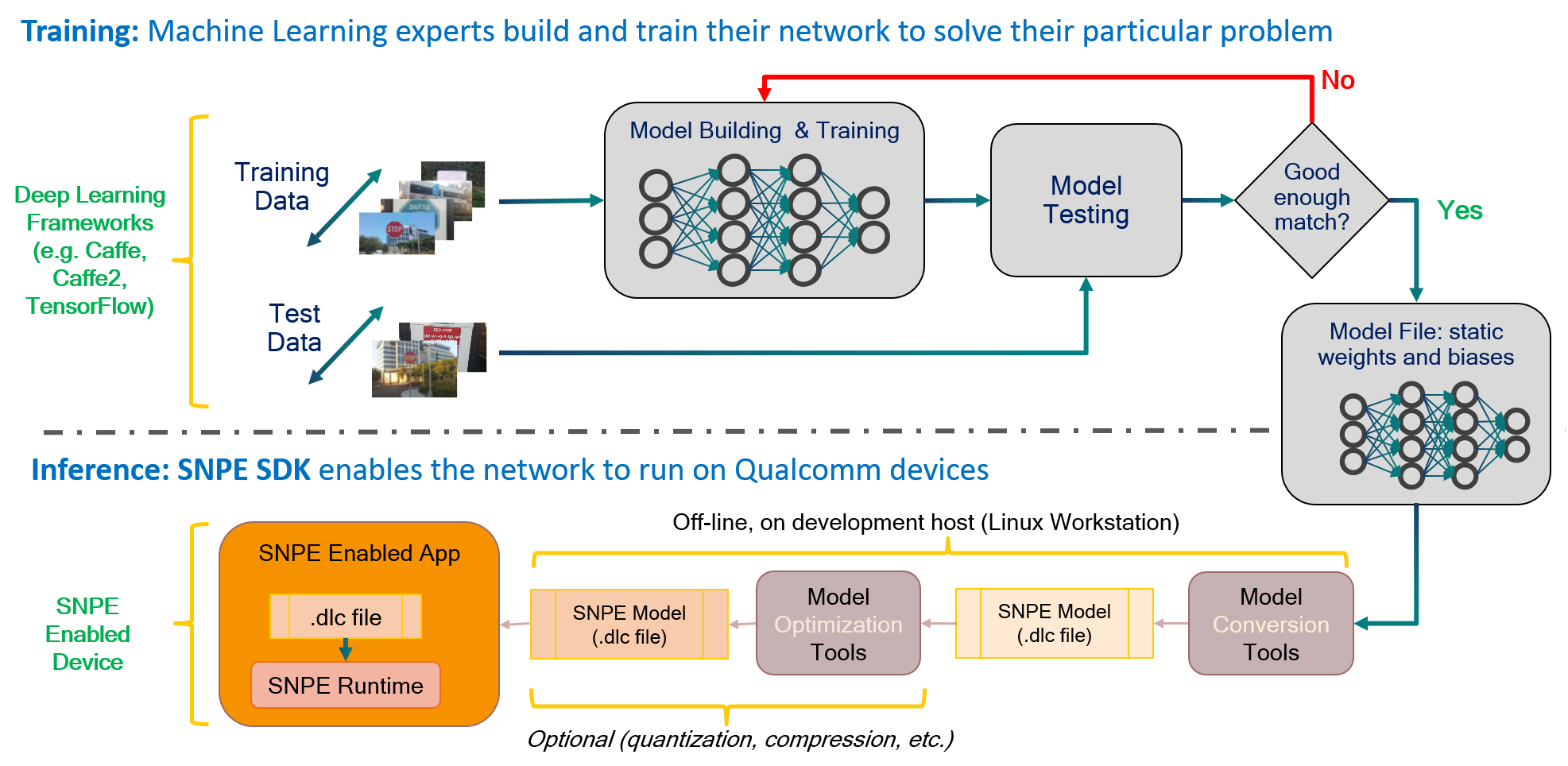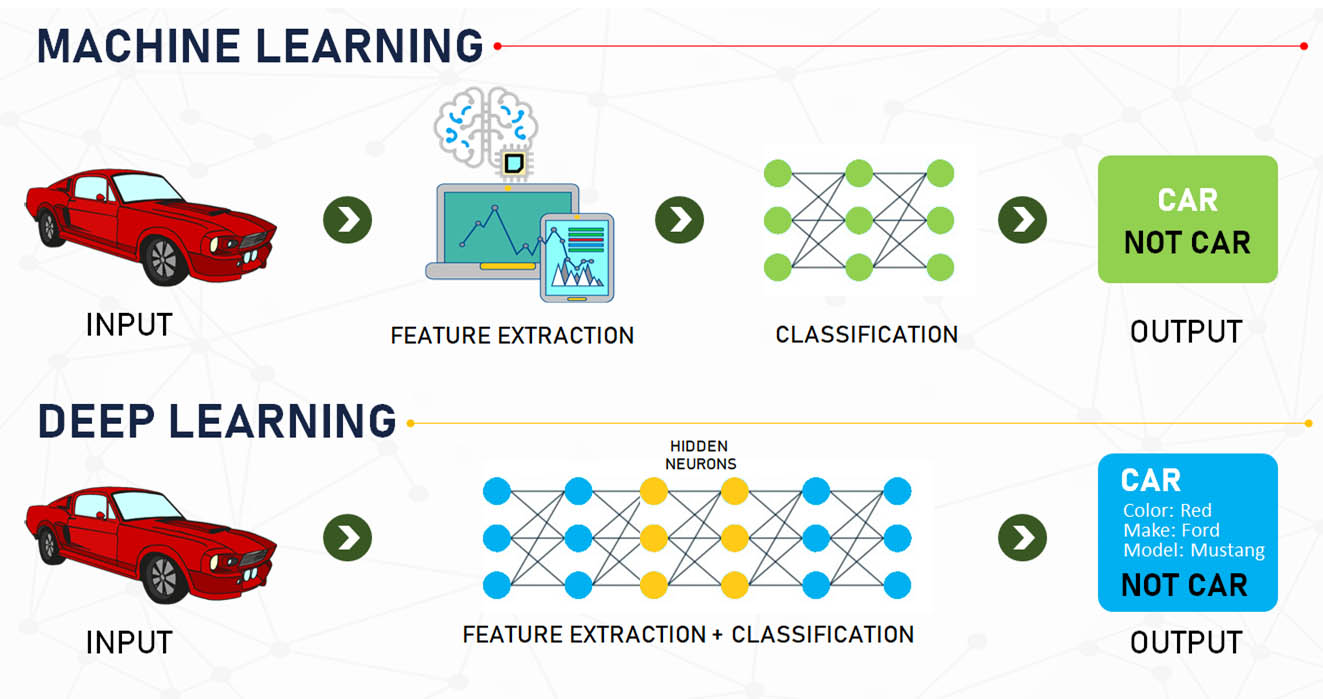Caffe Vs TensorFlow
We are heading towards the Industrial Revolution 4.0, which is being headed by none other than Artificial Intelligence or AI. Today, we are quite familiar with technological advancements like self-driving cars, virtual assistants, facial recognition, personalized shopping experience, virtual reality, high-end gaming, and more.
It is artificial intelligence and machine learning that are making these applications possible. When you start learning about machine learning, it is imperative to come across its popular subset, i.e., deep learning.
While AI is a broader term that includes everything used to make machines mimic the human brain to perform tasks, deep learning is the part of AI that is more focused on using artificial neural networks, learning, and improving on its own by examining computer algorithms.
There are deep learning frameworks that can design, train, and validate deep neural networks. TensorFlow, PyTorch, Caffe, and MXNet are some of the most popular deep learning frameworks available in the market.
This article particularly focuses on two frameworks Caffe and TensorFlow, its details, and compare both. It further lets you understand the benefits of learning them by taking the Caffe training or TensorFlow course.
What is TensorFlow?
As mentioned on the official website, TensorFlow is an end-to-end open-source platform for building and deploying machine learning models. It offers a range of tools, libraries, and community resources that the developers can use to create sophisticated machine learning or deep learning-powered applications. Intuitive high-level APIs allow easy model building, and models can be trained in the cloud, browser, on-premises, or any other device using TensorFlow. Developed by the Google Brain team, it is an entire ecosystem designed to solve real-world challenging problems with machine learning.
Features like the Keras Functional API and Model Subclassing API in TensorFlow allow better flexibility and control to create complex topologies. Developers can also explore powerful add-on libraries and models of TensorFlow like Ragged Tensors, BERT, TensorFlow Probability, and Tensor2Tensor. Renowned names like Intel, Twitter, Coca Cola, Airbnb, and GE Healthcare have utilized TensorFlow effectively for creating ML-powered applications.
What is Caffe?
Created by Berkeley AI Research (BAIR), Caffe (Convolutional Architecture for Fast Feature Embedding) is a deep learning framework with expressive architecture, extensible code, and high processing speed. The framework is written in C++ and has a Python interface. Instead of code, models and optimizations in Caffe are defined as plaintext schemas. Caffe makes switching between CPU and GPU quite easy through setting a single flag on a GPU machine and then deploying to commodity clusters or mobile devices.
Caffe has a stronghold when it comes to industrial applications in vision, multimedia, and speech. It is also being used in academic research projects, image classification, as well as image segmentation.
Caffe supports different neural networks like CNN, RNN, LSTM, and fully connected neural network designs. Companies like Facebook, Adobe, Yahoo, Siemens, and Pinterest are already leveraging the Caffe framework to achieve various objectives.
Caffe vs. TensorFlow 
There are many choices when it comes to selecting a deep learning framework to develop an AI-powered application. Here we are concerned about TensorFlow and Caffe.
While the choice may vary from organization to organization depending on different factors that they consider, we have tried to make the task easier for you here.
TensorFlow offers high-level APIs to build ML models, while Caffe comparatively offers mid-to-low level APIs. Organizations that are focused on mobile phones and computational constrained platforms, then Caffe should be the choice.
TensorFlow is more applicable to research and server products. Further, as Caffe basically addresses the speed issues, its performance is somewhat better than TensorFlow.
Considering the deployment, developers find TensorFlow easier than Caffe as the former is easily deployed using the Python pip package and the latter requires compilation from the source code. TensorFlow has better features to offer and beats Caffe in memory usage, scalability, flexibility, and portability.
Evidently, Caffe is a deep learning library that one can start with as it is easy to learn, and then move on to using TensorFlow and other libraries as you become comfortable designing various ML models.
As Google Brain Team has developed TensorFlow, it has a huge community support compared to any other library. Google is investing heavily in the framework and regularly updating it to offer more enhanced services. Caffe, however, is also catching up, and Facebook released Caffe2 in April 2017 to make it more developer-friendly and open-sourced.
Caffe Vs TensorFlow: Ready to Explore Deep Learning Libraries?

Deep Learning is becoming quite popular among professionals these days, and many are willing to learn how to build fascinating applications using it. It is important to learn how to use different deep learning frameworks and demonstrate your expertise in it to work on any ML-powered project.
There are online training courses that can not only help you learn deep learning from scratch but also let you become well-versed in using deep learning frameworks like Caffe and TensorFlow. You will not regret investing your time either in the Caffe training course or TensorFlow online course. Better to start today and stay ahead of the growing competition in this field knowing the difference between Caffe Vs TensorFlow.




















